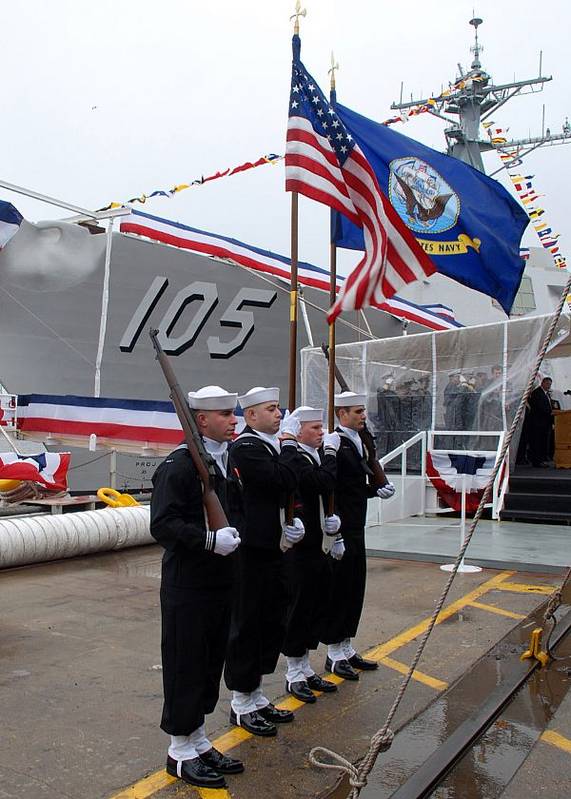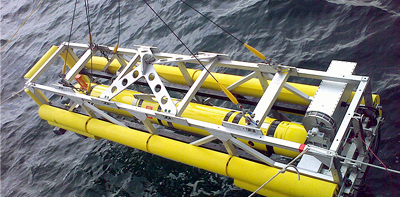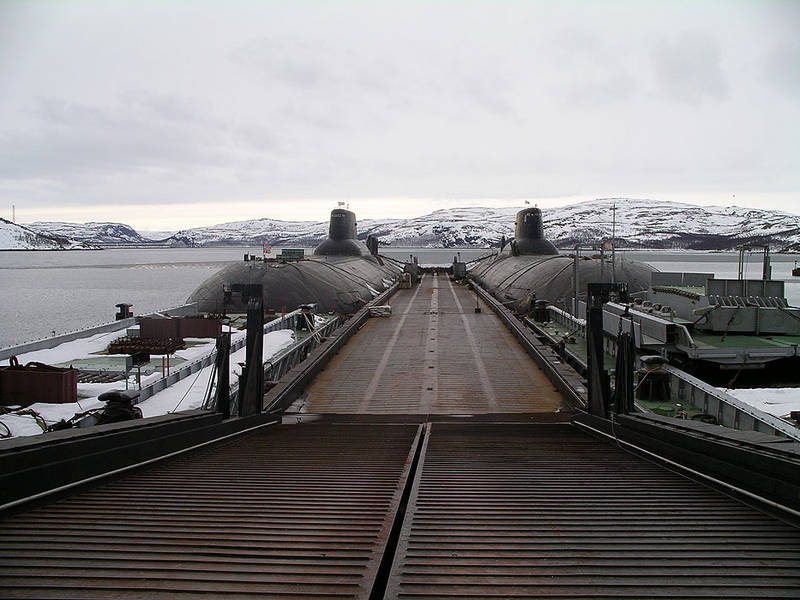
Welcome to MSW’s Scuttlebutt! Here’s the news for the day.

Gas pipeline probe uncovers shipwrecks in Baltic Sea
Source: AFP
A dozen previously unknown shipwrecks, some of them believed to be up to 1,000 years old, were discovered in the Baltic Sea during a probe of the sea bed to prepare for the installation of a large gas pipeline, the Swedish National Heritage Board said Monday.
"We have manage to identify 12 shipwrecks, and nine of them are considered to be fairly old," Peter Norman, a senior advisor with the heritage board, told AFP.
"We think many of the ships are from the 17th and 18th centuries and we think some could even be from the Middle Ages," he said, stressing that "this discovery offers enormous culture-historical value.
The shipwrecks were discovered during a probe by the Russian-led Nord Stream consortium of the sea bed route its planned gas pipeline from Russia to the European Union will take through the Baltic.
"They used sonar equipment first and discovered some unevenness along the sea bottom ... so they filmed some of the uneven areas, and we could see the wrecks," Norman explained.
The discovery was made outside Sweden's territorial waters, but within its economic zone, he said.
None of the wrecks were in the actual path the Nord Stream pipeline is set to take, but they were in its so-called anchor corridor, meaning they are in the area where ships laying the pipeline might anchor, Norman said.
"That's one of the reasons this probe was done: to avoid damaging wrecks on the sea bed," he said, adding that the Swedish National Heritage Board had received assurances from Nord Stream that "the positioning of the wrecks will be taken into account when they lay the pipeline".
Due to its low temperatures and oxygen levels, the Baltic Sea is known as an ideal environment for conserving shipwrecks, which can remain virtually unblemished for hundreds and even thousands of year.
According to Norman, some 3,000 shipwrecks have been discovered and mapped in the Baltic, but experts believe more than 100,000 whole and partial wrecks litter the sea bottom.
"What makes this discovery so unique is that these wrecks have their hulls fully intact," Norman said, adding however that there were no plans to raise the wrecks, which lie at a depth of more than 100 metres (328 feet).
USS Dewey Commissioned at Seal Beach
Source: US Navy
SEAL BEACH, Calif. (NNS) -- USS Dewey (DDG105) was formally commissioned today in a ceremony on Naval Weapons Station Seal Beach, marking the first time a warship has been commissioned in the Orange County city.
The new destroyer honors Adm. George Dewey (1837-1917) who commanded the Asiatic Station from the cruiser Olympia. Shortly after the onset of the Spanish-American War, Dewey led his squadron of warships into Manila Bay on April 30, 1898. The next morning, his squadron destroyed the Spanish fleet in only two hours without a single American loss. A widely popular hero of his day, Dewey was commissioned admiral of the Navy in March 1903. Two previous ships have proudly carried his name.

Adm. Michael Mullen, chairman of the Joint Chiefs of Staff, the event's principal speaker, addressed the new ship's crew and called on them to provide leadership and dedication to each other and the mission.
"Let you be guided by that sense of duty which knows not the timidity of those who stay silent when they see something wrong," Mullen said. "And let you be inspired by the strength and the fortitude of your families whose high expectations of your conduct are—or should be—exceeded only by those you hold for yourselves."
Dewey is the 55th Arleigh Burke-class destroyer. The ship will be able to conduct a variety of operations, from peacetime presence and crisis management, to sea control and power projection. Dewey will be capable of fighting air, surface and subsurface battles simultaneously and contains a myriad of offensive and defensive weapons designed to support maritime warfare in keeping with "A Cooperative Strategy for 21st Century Seapower," which postures the sea services to apply maritime power to protect U.S. vital interests in an increasingly interconnected and uncertain world.
Mrs. Deborah Mullen, the ship's sponsor, culminated the ceremony with the traditional order to "Man our ship and bring her to life!" emphasizing that the ship is truly alive with the Sailors that are serving now and will serve on Dewey in the future.
Cmdr. Warren Buller, of Concord, Mass., is the first commanding officer of the ship and leads the crew of 276 officers and enlisted personnel. He was proud to see this day come, marking the beginning of the ship's life and pointed to the ship's flag flying from the yardarm with the echoing Adm. Dewey's exhortation "Fight" in Navy blue on a field of gold above four white stars.
"Our command's philosophy; fight the ship, fight for your people and know why you fight for the country," Buller said. "We are ready to join the fleet, we are ready to fight."
The 9,200-ton Dewey was built by Northrop Grumman Shipbuilding in Pascagoula, Miss. The ship is 509 feet in length, has a waterline beam of 59 feet, and a navigational draft of 31 feet. Four gas turbine engines will power the ship to speeds in excess of 30 knots.
Dewey, her crew and their families will call San Diego home after commissioning.
Navy's New Mine Hunter Enters Service
Source: UK Ministry of Defense
To tackle the abundant and significant threat of sea mines, the Royal Navy's new unmanned, underwater 'robots' have entered service following successful trials at the end of last year.
Modern mines are capable of being triggered by just the sound of a ship passing above so equipment for detecting them needs to be state-of-the-art.
The Mine Countermeasures Reconnaissance Unmanned Underwater Vehicle (known as 'Recce') can hunt sea mines remotely down to 200 meters and is now fully integrated into service, having been handed over to the Royal Navy's Unmanned Underwater Vehicle Unit.

The new, fully autonomous Recce system can scan the sea bed for mines for over 20 hours at a time, using an advanced system of sensors to pin-point their exact location.
This data is fed back to the onboard operators for analysis, considerably reducing the risk to naval divers who traditionally carried out these operations.
High resolution imagery also gives operators a sharper, clearer picture of the sea bed, enhancing their ability to identify the mines.
The system is a step-change for the mine hunting capability of the Navy's Hunt Class Mine Countermeasures (MCM) Vessels, but its adaptability allows it to be deployed from any ship or even a jetty with a suitable davit.
Defense Equipment and Support's Underwater Systems Program Manager, Phil Jenkin, said:
"The system builds on the success of the REMUS technology of smaller, shallow water vehicles, which the Navy has used over the last few years.
"The new vehicle is not intended to replace the existing systems but extend the Navy's remote mine hunting capability, boasting improved sonar technology, allowing it to cover larger areas of water and to dive deeper."
As well as hunting mines, the system is capable of conducting remote assessment of the marine environment such as mapping the ocean floor and measuring ocean currents.
While finely tuned to the Royal Navy's requirements, Recce was a low risk procurement, as Lieutenant Commander Paul Guiver, of the Underwater Warfare Systems Capability Development Group, explained:
"It is a fine example of using low technological risk, commercial off-the-shelf equipment and will provide the operational experience to the user that will help to de-risk future MCM capability program.
"REMUS technology is already used by a dozen navies worldwide, however the Royal Navy was the first to formally accept unmanned, underwater vehicle systems into service.
"The delivery of Recce and initial operating capability could not have been achieved without the considerable efforts of Hydroid Inc working closely with the Underwater Systems team. This marks a very important milestone in the development of our MCM and remote environmental assessment capability."
The Royal Navy has welcomed the new capability; Lieutenant Commander Kev Giles, the Navy's Fleet Mine Warfare Capability Manager, said:
"It is a leap forward from the smaller vehicles it already operates which have a shorter range, fewer sensors, and dive to a maximum 30-metre depth. This is why the Royal Navy is very enthusiastic about this. It gives us a look into the future."
Two systems, each consisting of two 3.9-metre long, torpedo-shaped vehicles, were bought by Defense Equipment and Support in a £5m contract placed with Hydroid Inc in 2007.

Boeing Receives Contract for US Navy Direct Attack Moving Target Capability
Source: Boeing Co.
ST. LOUIS --- The Boeing Company today announced that it has been awarded an $11.4 million contract to supply Laser Joint Direct Attack Munitions (Laser JDAM) to meet the U.S. Navy’s Direct Attack Moving Target Capability (DAMTC) requirement.
The initial contract, which calls for the delivery of 23 munitions for testing and evaluation, is expected to lead to a production contract in 2011. With follow-on options, total DAMTC deliveries could reach 11,000 units and the total contract value could exceed $91 million.
“The non-developmental Laser JDAM has proven performance on today’s battlefield,” said Debbie Rub, vice president, Boeing Weapons. “DAMTC will provide enhanced moving and maneuvering capability beyond current Laser JDAM capability when it counts the most.”
Laser JDAM is currently in the Navy inventory. Additional quantities procured for the DAMTC mission will ensure an ability to engage stationary, fast-moving and maneuvering land targets. Laser JDAM combines a precision laser seeker to acquire and track laser-targeted signals and a JDAM guidance tail kit to engage the target.

Typhoon Class SSBN Walkaround
Today’s website a walkaround of the Typhoon Class SSBN. Enjoy.
This Day in U.S. Naval History
1798 - The first U.S. Navy surgeon, George Balfour, is appointed.
1847 - Commodore David Connor leads a successful amphibious assault near Vera Cruz, Mexico.
1862 - The first battle between ironclads - USS Monitor and CSS Virginia - takes place.
Photo of the Day

Russian Typhoon class submarines in port.
Gator












